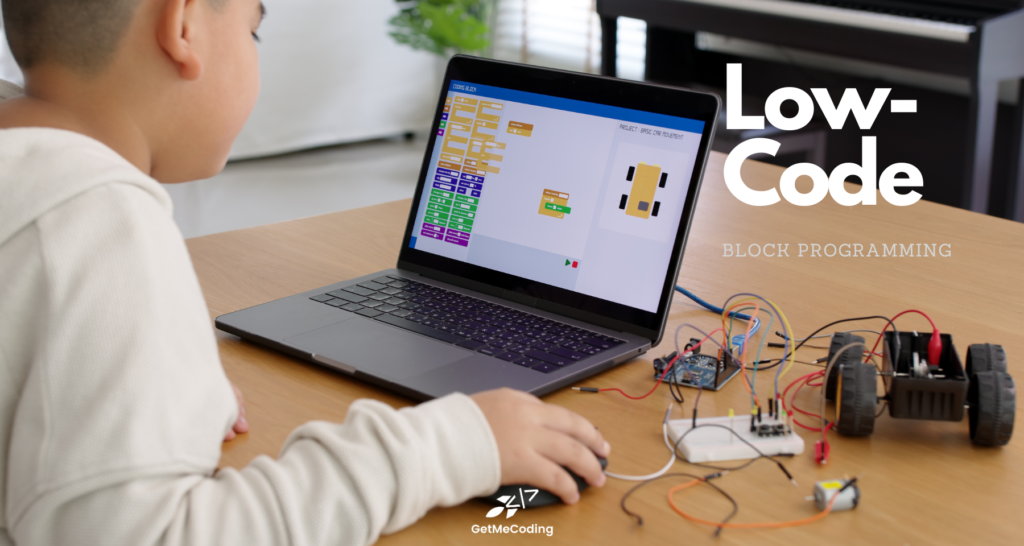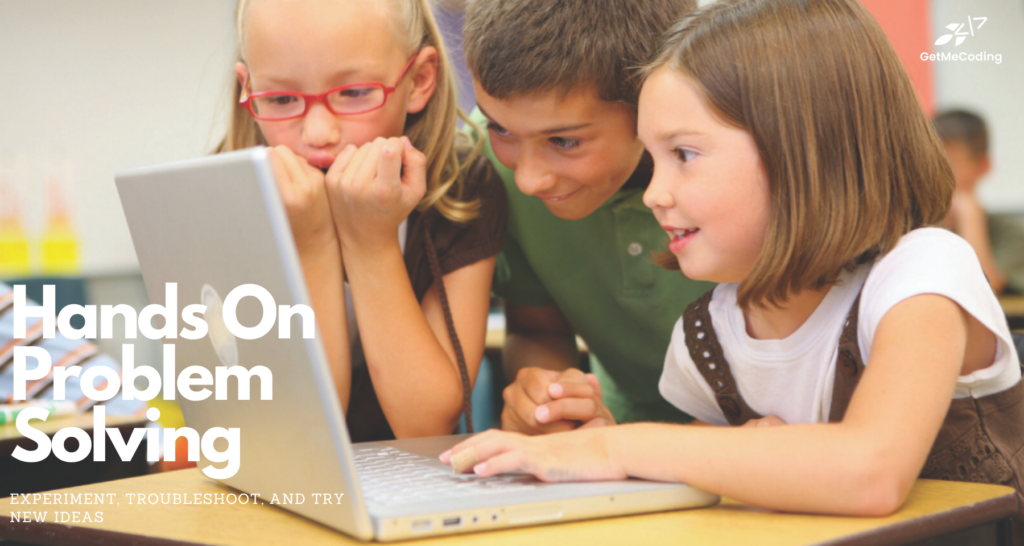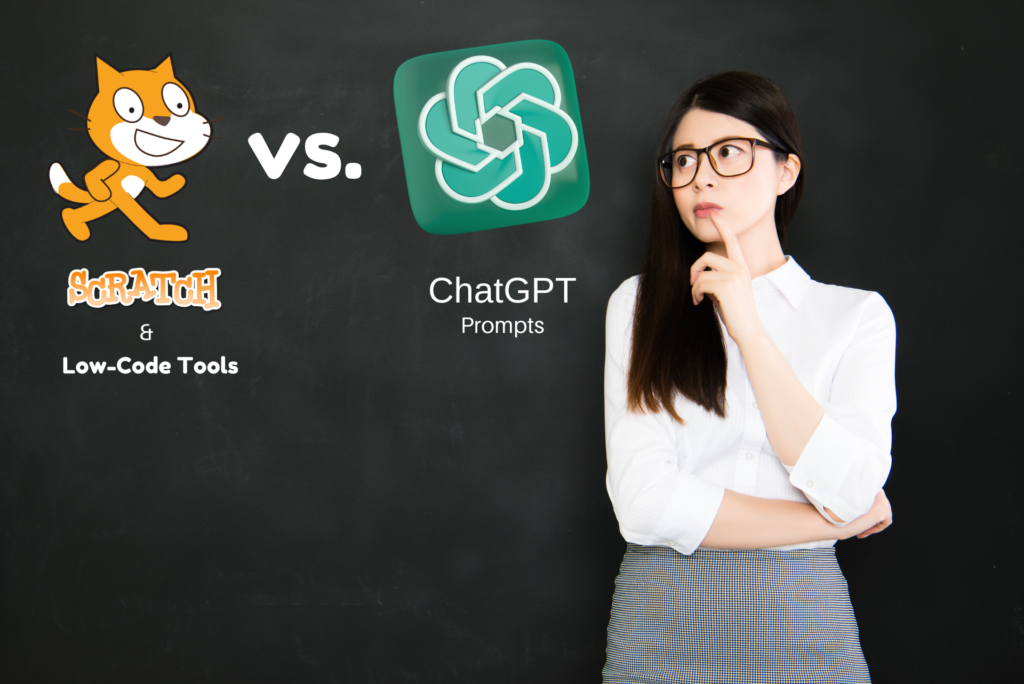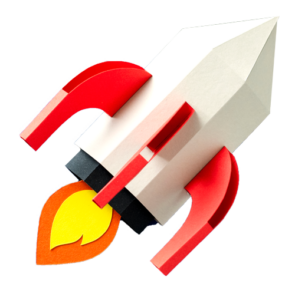A Teacher’s dilemma is surfacing. If you are trying to decide between using Scratch or AI-Powered ChatGPT to begin learning to code I provide a few things to consider for the coding learning experience. Artificial intelligence may be all over the news and a little intimidating but if you are using Scratch or other similar coding tools…..stay the course!
I will share why below. Please read on…..
As you begin your coding journey there is a new dynamic to explore between low-code tools such as Scratch and the AI solutions like ChatGPT. They can co-exist in your classroom or at home. However, there are several key points to keep in mind that I walk you through.
Block Coding Platforms ( aka "Low Code")
There are two possible ways to begin learning to code:
- Use an easy platform called “low-code” like Scratch or Microsoft MakeCode Arcade.
OR
- Use smart tools like ChatGPT.
Both are useful, but I share why Scratch and other low-code platforms are important for students’ coding education.
I explore what low-code is in a prior blog post here. If you are new to AI powered ChatGPT, I encourage you to read my explanation here.
Empowering Creativity and Engagement

Low-code platforms such as Scratch (https://scratch.mit.edu) or Microsoft MaKeCode Arcade (https://arcade.makecode.com/) are an excellent tools for empowering students to be creative and innovative.
Scratch, for instance, offers an interactive and highly immersive environment that enables budding coders to unleash their imaginations and explore diverse coding concepts.
Students can leverage the visually-rich components of the tool to design visually appealing projects and bring their ideas to life in a fun and creative format. GetMeCoding.com has seen successful results with Scratch for over 12 years.
Although AI-powered ChatGPT has its benefits, it misses out on the interactive visual elements that excite and engage young minds. As a result, it can limit the ability of students to express their creativity.
With low-code platforms like Scratch, young coders can tap into their limitless potential as they embrace the visual and engaging features. Having access to these helps them to grow and develop their skills and abilities in an engaging way.
Guided Learning and Structure

Low-code tools make learning how to code easier. They use pictures/blocks and guides to teach students how to think logically, understand how code works, and learn coding basics. It builds confidence in coding quickly which then prepares them for the next steps.
On the other hand, ChatGPT can generate code but doesn’t provide a complete and organized way for students to learn coding properly. If you do not “prompt” the AI-chatbot correctly you may also get errors in your results.
Hands-on Problem Solving

Low-code tools encourage hands-on problem solving, enabling students to actively experiment, test ideas, and troubleshoot their projects. By building and iterating on their creations, students develop resilience, persistence, and critical thinking skills.
ChatGPT’s code generation capabilities are limited to specific requests, missing out on the invaluable hands-on problem-solving experience.
Scratch and other tools like Microsoft MakeCode Arcade are designed to make building with software easier. They allow the learner to solve problems by experimenting, testing ideas, and fixing issues in your projects. It’s like having a fun and interactive playground for your creativity!
Collaboration and Peer Learning

Low-code tools foster collaboration and peer learning within a supportive community. Students can share their projects, provide feedback, and learn from one another’s successes and challenges. This social aspect cultivates teamwork, communication, and the exchange of ideas.
When I meet with companies to sponsor technology internships for college aged students two of the top skills all organizations seek is the ability to work in a team and communicate.
ChatGPT, being an AI tool, lacks the collaborative community element that low-code tools offer.
Comprehensive Skill Development

Low-code tools offer a fantastic starting point for students beginning to learn how to code, providing them with a solid foundation. As stated, what makes these platforms special is that they combine visual coding with the transition to text-based programming languages.
By using low-code tools, students gain a comprehensive understanding of coding principles. I share some of these principles here. They begin by using visual tools and drag-and-drop features to create their projects. This approach allows them to grasp coding concepts in a more intuitive and visual manner, making it easier to understand and apply.
Over time, students gradually transition to text-based programming languages. These can include:
This transition is smoother and less overwhelming because they already have experience with the fundamental concepts through the visual coding tool.
This comprehensive skill development prepares students for more advanced coding concepts in the future.
While ChatGPT can be helpful in generating code snippets, it’s important to note that it doesn’t offer the same holistic learning experience as low-code platforms. Low-code platforms provide students with hands-on, interactive coding environments that allow them to actively experiment, troubleshoot, and gain a deeper understanding of coding concepts.
The bottom-line is that low-code platforms are a valuable resource for students as they embark on their coding journeys. They offer a combination of visual and text-based coding experiences, helping students build a strong foundation and develop a broader understanding of coding principles.
While ChatGPT can assist with code generation, the complete learning experience provided by low-code platforms cannot be duplicated.
Wrapping it up...
As we guide students through the coding landscape, let’s embrace the unique advantages of low-code tools. They empower creativity, provide structured learning experiences, encourage hands-on problem solving, foster collaboration, and facilitate comprehensive skill development.
While AI-powered solutions like ChatGPT have their merits, they currently complement rather than replace the transformative potential of low-code platforms in coding education.
Having taught coding and technology for over two decades, I firmly believe in harnessing the power of low-code tools to inspire and engage young minds in their coding journeys. Through the GetMeCoding courses and resources, we aim to provide a well-rounded coding education that nurtures creativity, critical thinking, and problem-solving skills.
Together, let’s embrace the best of both worlds—low-code platforms and AI-powered tools—and unlock the boundless potential of our young coders.
Happy Coding!!

Mr. Fred
Let Me Help You

If you are a teacher or someone looking to help others learn to code, let me help you.



